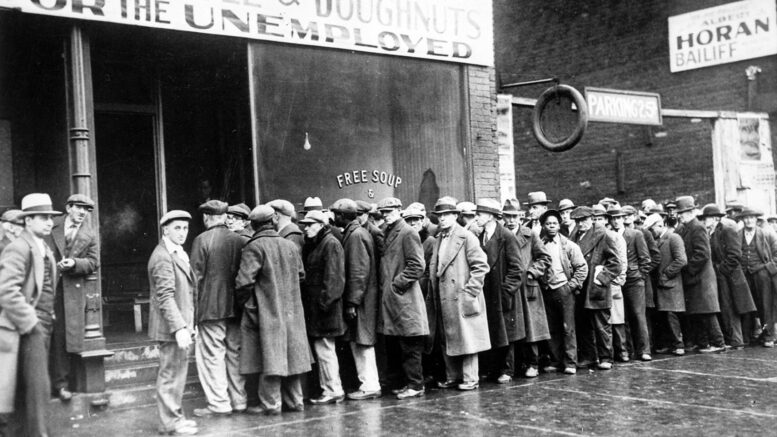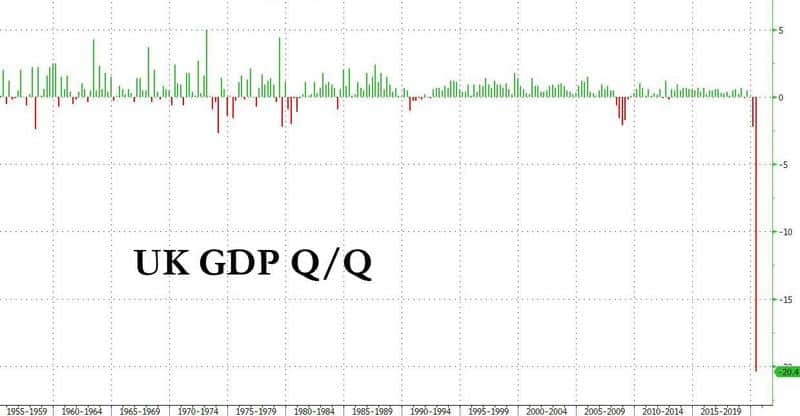Collapse: UK GDP Plunges To 2003 Levels
Thu 4:18 pm +01:00, 13 Aug 2020
The British economy shrank by a record 20.4% in the second quarter when the coronavirus lockdown was tightest, the most severe contraction reported by any major economy so far, with a wave of job losses set to hit later in 2020, according to Reuters. The (sequential) Q2 GDP slump exceeded the 12.1% drop in the euro zone and the 9.5% fall in the United States.

“Today’s figures confirm that hard times are here,” said finance minister Rishi Sunak. “Hundreds of thousands of people have already lost their jobs, and sadly in the coming months many more will.”
The data confirmed that the world’s sixth-biggest economy had entered a recession, with the low point coming in April when output was more than 25% below its pre-pandemic level. In recent months there has been a modest improvement as GDP rose by 8.7% M/M in June. Cumulatively through the first two quarters of 2020, GDP fell by 22%. Given the scale of that shock, the level of GDP at the end of Q2 was in line with the level of quarterly GDP in mid-2003.
The monthly GDP data, however, offered a silver lining: growth restarted in May and quickened in June, when the economy expanded by a monthly 8.7% – a record single-month increase and slightly stronger than consensus expectations. From its pre-virus peak in February to its post-lockdown trough in April, GDP contracted by a cumulative 26%. As government restrictions were subsequently lifted, GDP began to recover, rising by 2.4%mom in May and 8.7%mom in June.
In the final month of Q2, services output accelerated from +1.5%mom to +7.7%mom, manufacturing output accelerated from +8.3%mom to +11.0%mom, and construction output accelerated from +7.6%mom to +23.5%mom. Within the services sector, retail returned to a level around 6% short of its pre-virus peak, while hospitality remained around 83% short. All in all, the level of aggregate GDP in June was still 17% below its pre-virus peak.
The evolution of GDP within the second quarter is encouraging, but the contraction in GDP between the first and second quarter is historic, with the sequential drop in Q2 a record 20.4% qoq. Cumulatively through the first two quarters of 2020, GDP fell by 22%. Given the scale of that shock, the level of GDP at the end of Q2 was broadly in line with the level of quarterly GDP in mid-2003.
Three features of today’s data are worth emphasizing:
- the only other comparable quarterly contraction in modern history occurred during the recession of the early 1920s (in the third quarter of 1921, GDP fell by 12% (qoq non-annl.);
- the post-virus contraction in GDP through 2020 was six times faster and four times deeper than the contraction in GDP through 2008/09 (during the financial crisis, GDP fell by almost 7% from peak to trough, over the course of a year and a half);
- the cumulative hit to UK output through the first two quarters of 2020 was more acute than that experienced in other developed economies (the 22.1% decline in UK GDP compares with a 15.3% decline in the Euro area, for example, and a 10.6% decline in the US).
https://www.technocracy.news/collapse-uk-gdp-plunges-to-2003-levels/










